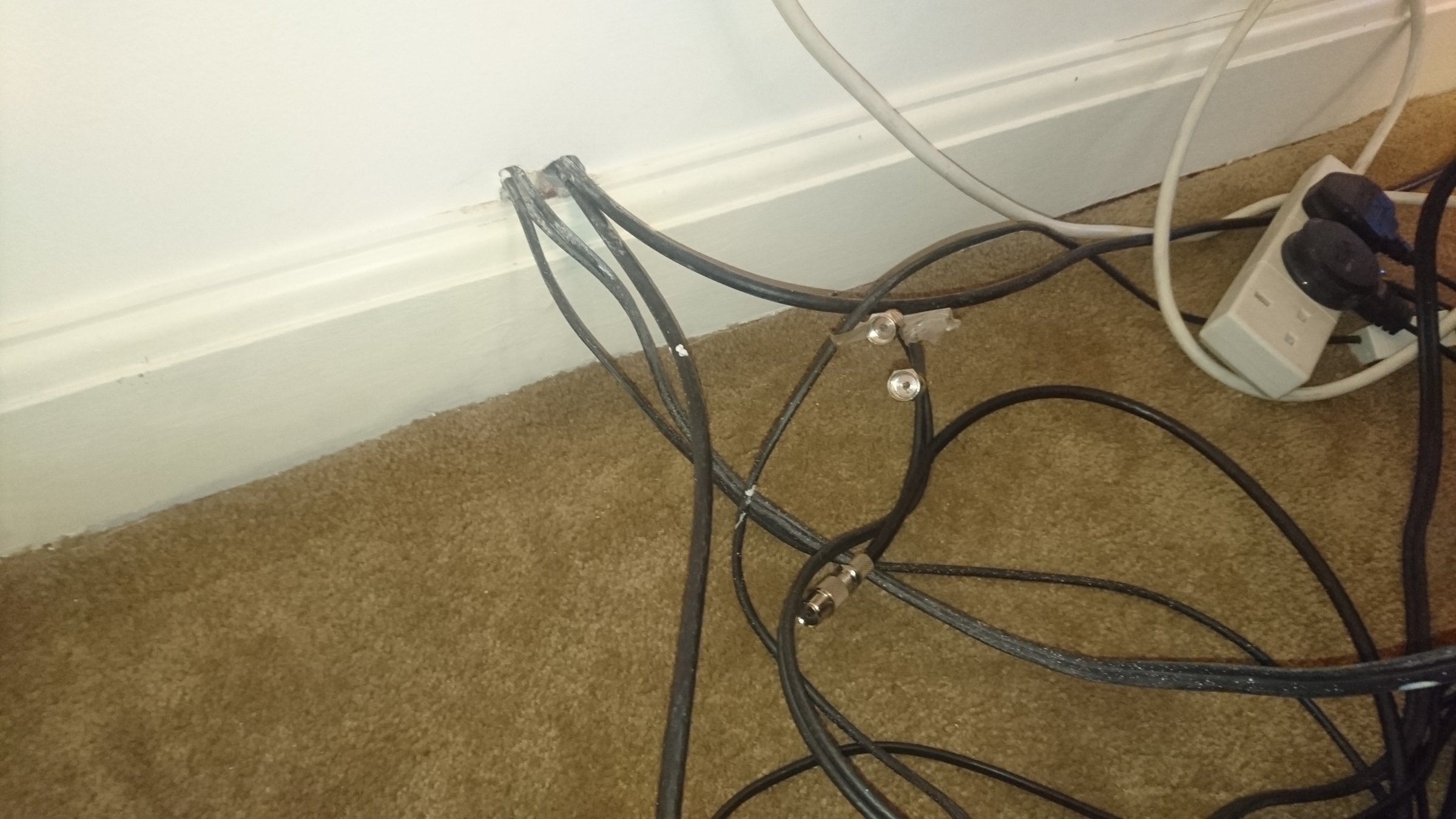The previous owner of my current place had the following cable set up for the sky/tv cabling etc....
Basically the sat 1 and 2 cables come down the side of the house straight through the wall into the front room, this is also the case with the coax.
Im in the process of trying to hide the cables behind the plasterboard and tidy everything up with a proper wall socket like or similar to
this
id get one which also has telephone socket so i can connect my router in the same location
I was hoping that i could get an all in one socket which would allow me to simply connect each of the individual cables to the back of the socket without having to make any additional modifications to the cabling but i ive read a bit about needing to have something called a distributor, fitted neat to the roof ariel/sky dish....
im not sure exactly how these work but would fitting one of these require me to run additional cabling from the loft downstairs?
Or is there a solution that will allow me to just use the existing cabling with an all in one socket?
Thanks
Rob
Yes, you can get an all-in-one plate. No, you won't be able to fit it without modifying the cables. At the very least they'll need shortening and (in the case of the phone cable) you'll need a punch down tool to fit the individual cores to the back of the phone jack.
No, you don't need a "distributor" (distribution amp) in the loft. For one, mixing Sky's signal with the aerial (correct spelling

) was always a stupid idea because they don't work within a distribution system the same way, and two, all you'll be doing is taking one Sky dish feed (LNB signal) all the way up to the loft for it to come all the way back down to the lounge again which is a huge round trip for sod all benefit.
Before you buy anything and embarking on the router move you might want to check its broadband speed connected where it is, and then measure it with the router connected to the (existing?) phone cable behind the telly. The quality of the cable makes a difference. Moving the router might be convenient but if it knackers up the download speeds then you could be doing this work and going backwards.
Assuming you have a laptop, get hold of an Ethernet cable and connect your PC directly to the router before doing any speed tests. This is because when running from wireless you're not testing the broadband speed alone, you're testing the broadband speed + the effect of any speed decrease via Wi-Fi. There's plenty of internet speed testers free on the web.
Wall plates look neat but bear two things in mind. 1) They introduce at least two addition cable joints per connection. Each cable joint knocks the signal level down a bit and is a potential point of failure. 2) They only look neat with no cables attached. Once you hook up all the fly leads you're back to square one again.
If you're still on the path of a wall plate then here's then point to consider: The decent (shielded: very important) all-in-one wall plates are no good for a direct connection as you're planning. The unshielded ones might offer the right combination of sockets, but without shielding you're opening yourself up to problems with interference. Those problems can only be fixed with a wall plate that offers shielded individual modules. Long story short, you buy the wrong thing then end up throwing it away and buying the right thing when you have to do the job over again. Moral of the story:
Buy the right thing 1st time.
In this case the best solution for you if you still want a wall plate is a modular unit. "Modular" means there's a rectangular frame the same size as a single or double socket plate, but there's a hole in the middle. This hole is filled by modules - hence the name - and each module can be selected to provide whatever you need to make the correct combination of sockets.
Here's a
link to a site doing a wide variety of modules, but not everything. They lack a shielded RF module for TV. You don't need shielding for anything else. The satellite cable connections can be done with a back-to-back twin F socket module. The phone jack is easy to see on the list.
One double gang frame holds 4x single-width modules. A phone jack is a single-width module. So is the twin F. Blanks are available to fill in any unused spaces.
If it was me, I wouldn't bother with a grid module plate at all. I'd fit a single-gang brush plate brush plate just above the skirting board where the cables come through right now.
It would keep the cables low to the ground and (depending on what's behind the wall or skirting) maybe even make it easier to feed the excess back on to the wall. You might get away without the need to alter any of the cables too.


